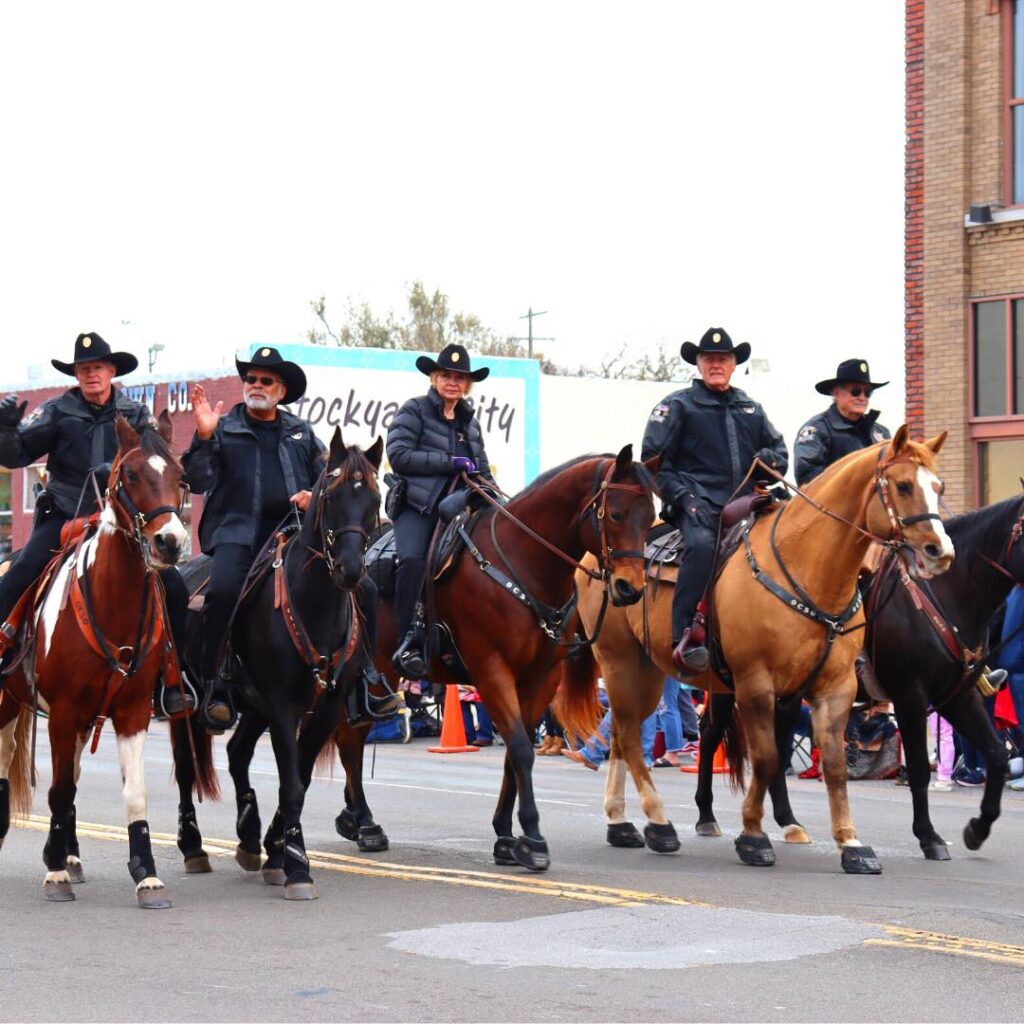Enabled in part by the intersection of numerous railroads and a massive western livestock market, Oklahoma National Stockyards emerged during 1910 as a public livestock market in southwest Oklahoma City. Massive packing plants simultaneously arrived next door to ‘the Yards,’ producing all kinds of meat products. These included Morris & Company, which later became Armour & Company, as well as Schwartzchild & Sulzberger, which later became Wilson & Company. As a result, a small city known as Packingtown enveloped thriving enterprises.
Now listed on the National Register of Historic Places, the four-block Packingtown area, renamed Stockyards City Historic District, is perched where Exchange Avenue and Agnew Avenue intersect I-40 and I-44. While fully renovated and modern, the area remains an island within OKC, with ambiance and appearance that haven’t changed much in the last century. The buildings are a bit weathered and the hitching posts are gone, but cowboy hats and boots are sold and worn everywhere, along with all things western.
The thriving area is home to historic and even world-famous business ventures. Two of those, birthed in 1910, include the iconic Cattlemen’s Steakhouse and Exchange Pharmacy – OKC’s oldest continually operating restaurant and pharmacy, respectively.

A host of other well-known shops and businesses cater to famous and global visitors, farmers, ranchers and locals. Those include National Saddlery, founded in 1926, which is a major go-to location for buckaroo gear. Additionally, the Professional Rodeo Association headquarters, which opened many doors for females in the rodeo world, is over 2,400 members strong and resides in the district. There are also authentic American Indian shops, plus trendy and cutting-edge retailers.
The Stockyards City Main Street Association keeps businesses buzzing and growing. The group’s annual family-friendly events, which lasso big crowds, are reminders of the Old West flavor that never really left the area.
But in the beginning, railroads and cattle drives were integral to the Yards’ origins. During the area’s first year in operation, over half a million farm animals thundered onto the scene. Hay, corn and oat sales hit over $74k by 1934. The Yards evolved into a cattle auction in 1961, became the nation’s number one cattle market by the 1980s, and the largest cattle auction in the world by 1996.
Over 102,000,000 head of livestock have now passed through the Yards, which includes 32 acres of cattle pens, plus real cowboys on horseback, and is the world’s largest stocker and feeder cattle market.
The venture has a contemporary and global presence that continues as a major cog in the area, state and national economic engine. Along with ranchers and buyers, the public is welcome at Monday and Tuesday auctions, with times posted on Facebook every Sunday night.
Rousing Beginnings
During Oklahoma’s early years, influential politicians pushed hard within the state’s landscape to create a sturdy infrastructure. This initiative included the 1910 transition of the state capital from Guthrie to OKC, the latter of which boasted a population of 60,000 at the time.
Part of this plan involved generating OKC’s first major industry – the Yards plus packing plants – an enterprise hub that created 2,400 jobs and held firm as OKC’s largest employer for years.
A commercial district mushroomed around the hub, plus housing and transportation, meeting the needs of workers, and farmers and ranchers who brought their livestock into the district.






















